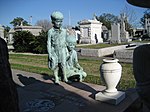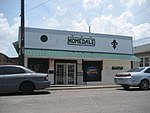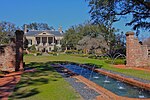Lakewood, New Orleans

Lakewood is a neighborhood of the city of New Orleans. A subdistrict of the Lakeview District Area, its boundaries as defined by the City Planning Commission are: Veterans Memorial Boulevard to the north, Pontchartrain Boulevard and the Pontchartrain Expressway to the east, Last, Quince, Hamilton, Peach, Mistletoe, Dixon, Cherry and Palmetto Streets to the south and the 17th Street Canal to the west. For decades Lakewood Country Club operated in the neighborhood, predating most residential construction and bestowing its name upon the developing area. With the finalization of I-10's and I-610's routes in the 1960s, much of Lakewood's golf course was expropriated for the sprawling I-10/I-610 interchange. Lakewood Country Club relocated to the Algiers neighborhood, on the West Bank of the Mississippi River, and the remainder of the golf course was developed as the Lakewood North and Lakewood South subdivisions. The former clubhouse remained for years, visible from I-10 and lastly used as the main building for the now-closed New Orleans Academy. The clubhouse was ultimately demolished to make room for a LDS Church, itself demolished in the aftermath of catastrophic flooding occurring in the wake of Hurricane Katrina.
Excerpt from the Wikipedia article Lakewood, New Orleans (License: CC BY-SA 3.0, Authors, Images).Lakewood, New Orleans
Marcia Avenue, New Orleans
Geographical coordinates (GPS) Address Nearby Places Show on map
Geographical coordinates (GPS)
| Latitude | Longitude |
|---|---|
| N 29.988055555556 ° | E -90.119722222222 ° |
Address
Marcia Avenue 5331
70124 New Orleans
Louisiana, United States
Open on Google Maps







